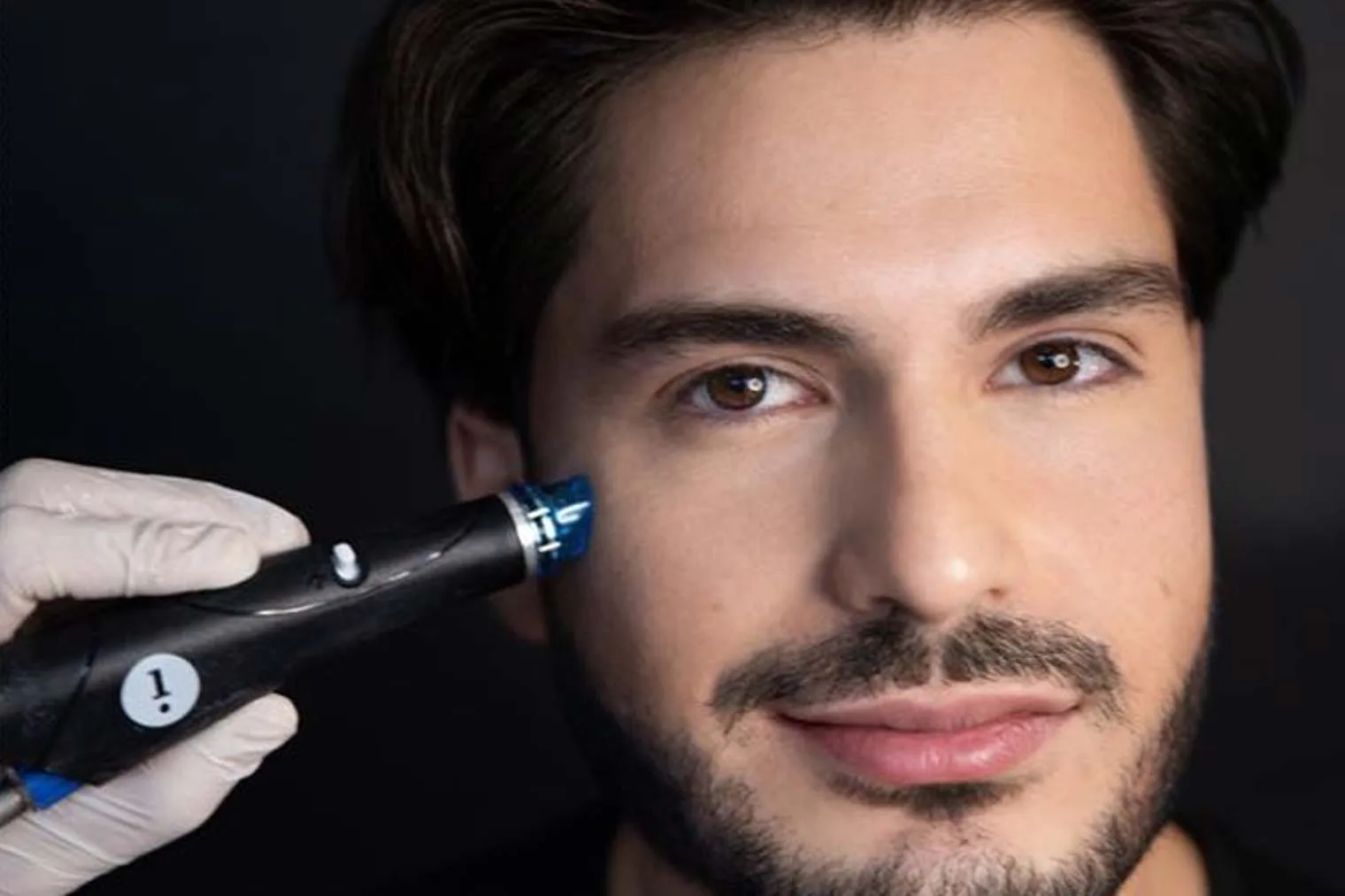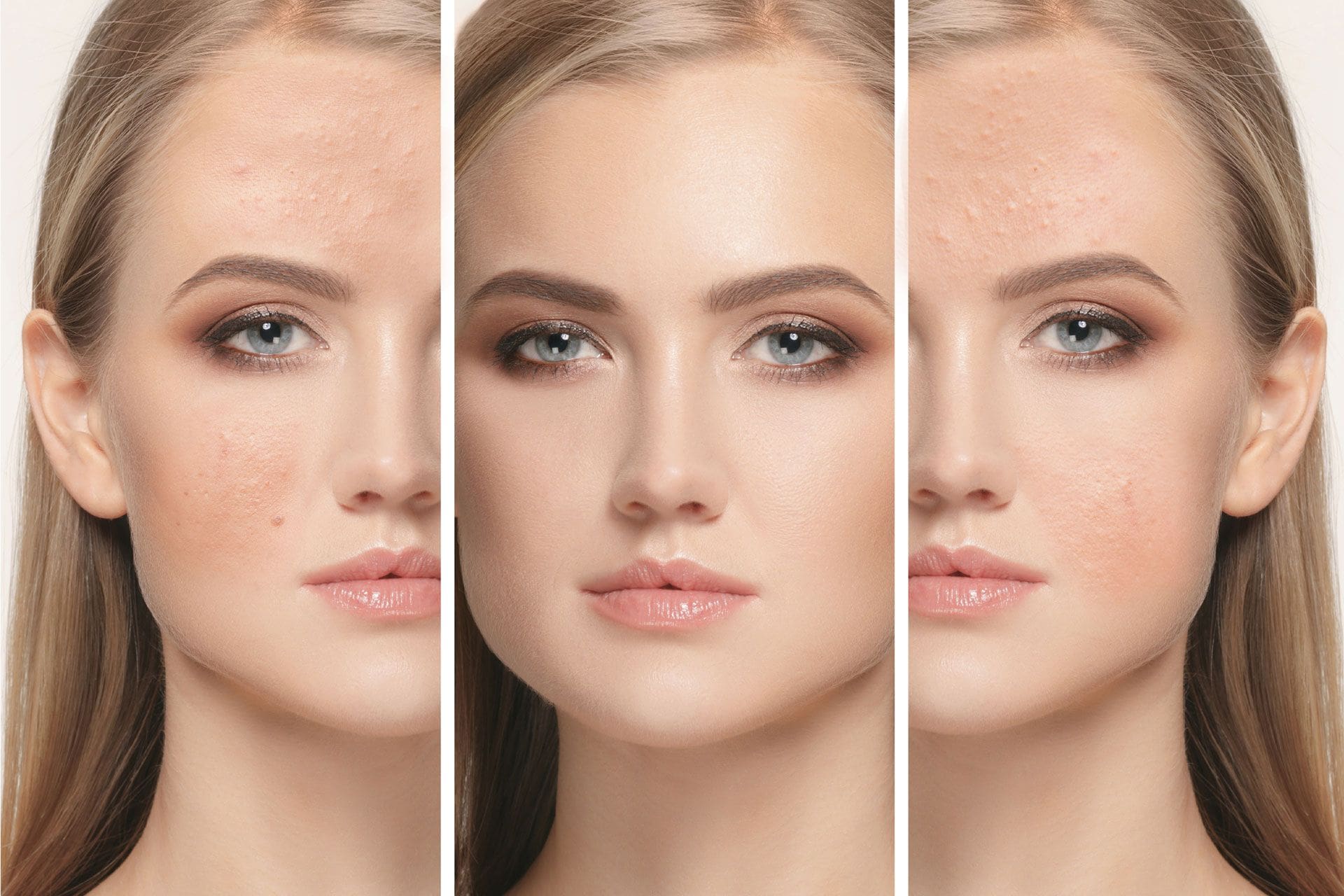What are acne scars?
Acne scars are scars that develop after you have had acne. They can be pits, holes or irregular dents in the skin. Your skin around these scars can also be discoloured. Research shows that when there has been severe inflammation, acne scars develop. Not every pimple is immediately susceptible to scarring, but the frequency and frequency of inflammation increase the chance of skin damage.
In addition, its onset and/or aggravation can also be influenced by the following external elements:
★ Regularly squeeze pimples and blackheads yourself;
★ Sunlight. A dark discoloration may occur when an inflammation is exposed to sunlight;
★ Genetic determinations;
★ Poor healing of a wound

We distinguish different types of acne scars:
★ Rolling scars.
These are large sunken scars that are often wider than 4 to 5 mm, they lie on the surface of the skin;
★ Boxcar scars.
These are round and oval sunken scars with a sharp edge;
★ Icepick scars.
These scars are point-shaped and deep. They are so-called pits in the skin. These are often 1 to 2 mm deep;
★ Residual acne.
In addition to the dents in the skin, red-purple or dark spots can also develop after acne, also known as: residual acne. This is not scar formation, but it often occurs after an inflammation has healed. These red-purple discolorations can remain after major inflammations and remain visible for several months.
Atrophic scars are acne scars that occur because too little skin was produced during the wound healing process. so the skin is thinner. These types of scars are divided into 3 subtypes by shape and depth;
★ Icepick scars 60-70%
These scars are point-shaped and deep. They are so-called pits in the skin. These are often 1 to 2 mm deep
★ Boxcar scars 20-30%
These are round and oval sunken scars with a sharp edge; these scars can be superficial or deep
★ Rolling scars 15-25%
These are large sunken scars that are often wider than 4 to 5 mm, they lie on the surface of the skin and have an M shape
In addition, the following may occur:
★ Hypertrophic scars
here you see thickening with a pinkish-red color. A hypertrophic scar can diminish over time.
★ Keloid
this is an abnormally thickened skin. is always larger than the original pimple.
These two forms are common in dark skin and usually on the trunk.
Remove acne scars
You can come to us for reducing acne scars. We offer treatments with or without laser. All treatments ensure that the scars become less deep and that the skin evens out.
★ Laser treatments
We use laser treatments for deeper but also milder acne scars. The lasers we use are the CO2, nd:YAG laser and IPL. The CO2 laser is the most intensive laser we offer, but therefore also the most effective. In general, laser treatments will cause more skin reaction than non-laser treatments.
★ Non-laser treatments
In some cases it is better not to use laser, think of darker skin types or skin types that are prone to hyperpigmentation. Then it is better to use treatments such as RF microneedling, microneedling and various stronger peels that will give you skin renewal.
For severe acne scars, we often combine different treatments for optimal results. For advice about your specific case, please make an appointment for an intake. Before the treatment we plan a no-obligation consultation. During this consultation we will look together at which treatment best suits your skin. You can easily schedule a consultation via the “Make appointment” link.

What treatments for acne scars?

RF Microneedling & Thermage

CO2 laser treatment

IPL acne scars

